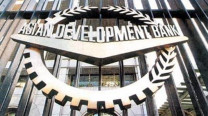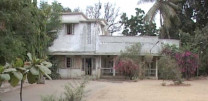‘To make better decisions on where to use aid, use stats’
Data analysis techniques could help refine budget allocations, encourage better usage.

Sophisticated statistical techniques might help policymakers in Pakistan make better decisions by providing data estimates at a finer geographic level about issues such as poverty, food security and malnutrition.
Small area estimation, a technique that uses statistical modelling to extract information from existing data available through census and sample surveys, could potentially be used to provide estimates for a new report on the status of food security in Pakistan.
The report is being prepared by the Sustainable Development Policy Institute (SDPI) and the World Food Programme (WFP) on the request of the Ministry of National Food Security and Research.
Dr Krishna Pahari, chief of the WFP’s Vulnerability Analysis and Mapping (VPM) unit, said the team working on the report is exploring different ways of coming up with new, detailed estimates for indicators that are only available at the highest levels of federal or provincial governments in Pakistan.
Sample surveys are a common technique for determining estimates of poverty and malnutrition, but these estimates are usually based on a limited number of observations that might lead to inaccuracies.
Small area estimation uses a complex mathematical model to combine common information from census data and survey data. It then computes information for households that exist in the most recent census data but are not included in a sample survey.
It’s not certain, however, that small area estimation will work in Pakistan due to the absence of fresh census data.
Pakistan has not had a national census since 1998, but there are other data sources, such as the 2011 National Nutrition Survey and the poverty census of 27 million households conducted for the Benazir Income Support Programme (BISP).
Stephen Haslett, a world-renowned expert in small area estimation, is currently in Pakistan inspecting these data sets to determine the feasibility of conducting small area estimation in the country.
Haslett, a statistics professor at New Zealand’s Massey University, has worked extensively in different countries around the world to apply small area estimation to determine estimates of expenditure, poverty and malnutrition.
At a special lecture organised by the SDPI in Islamabad on Monday, Haslett briefed the audience about small area estimation and its benefits.
“Small area estimation is a technique that gives you fine level information that allows you to make better decisions,” Haslett said. “Detailed information can help target aid better.”
Haslett said national surveys cannot provide detailed information at the local level, but with small area estimation, it is possible to estimate data at micro-levels, such as the district level.
He said extensive data collection can be very expensive and the estimation technique is a cost-effective computational solution for the problem of data collection.
The technique has been applied in around 70 countries around the world. Pahari said the technique has helped the WFP in their practical decision making, and the presence of Haslett in Pakistan could also help in the capacity building of statisticians in the country.
SDPI Executive Director Abid Suleri said techniques like small area estimation are needed to provide insight for policy intervention in the absence of official poverty estimates.
“Our national development targets are at the macro level, but with small area estimation we can highlight the disparity within regions,” Suleri said.
Published in The Express Tribune, October 17th, 2012.


















COMMENTS
Comments are moderated and generally will be posted if they are on-topic and not abusive.
For more information, please see our Comments FAQ